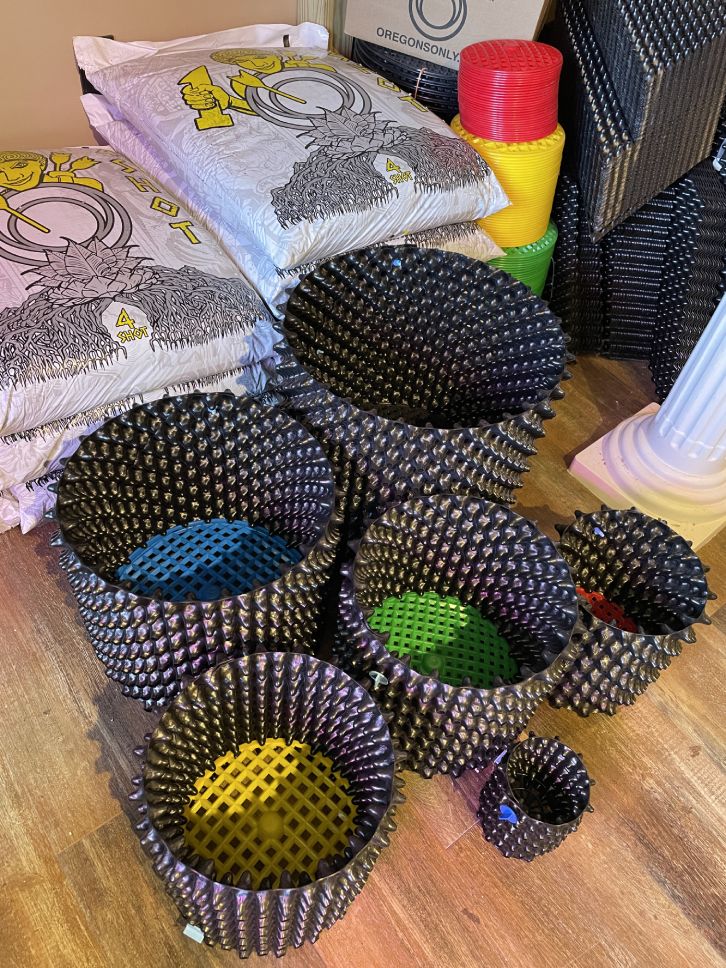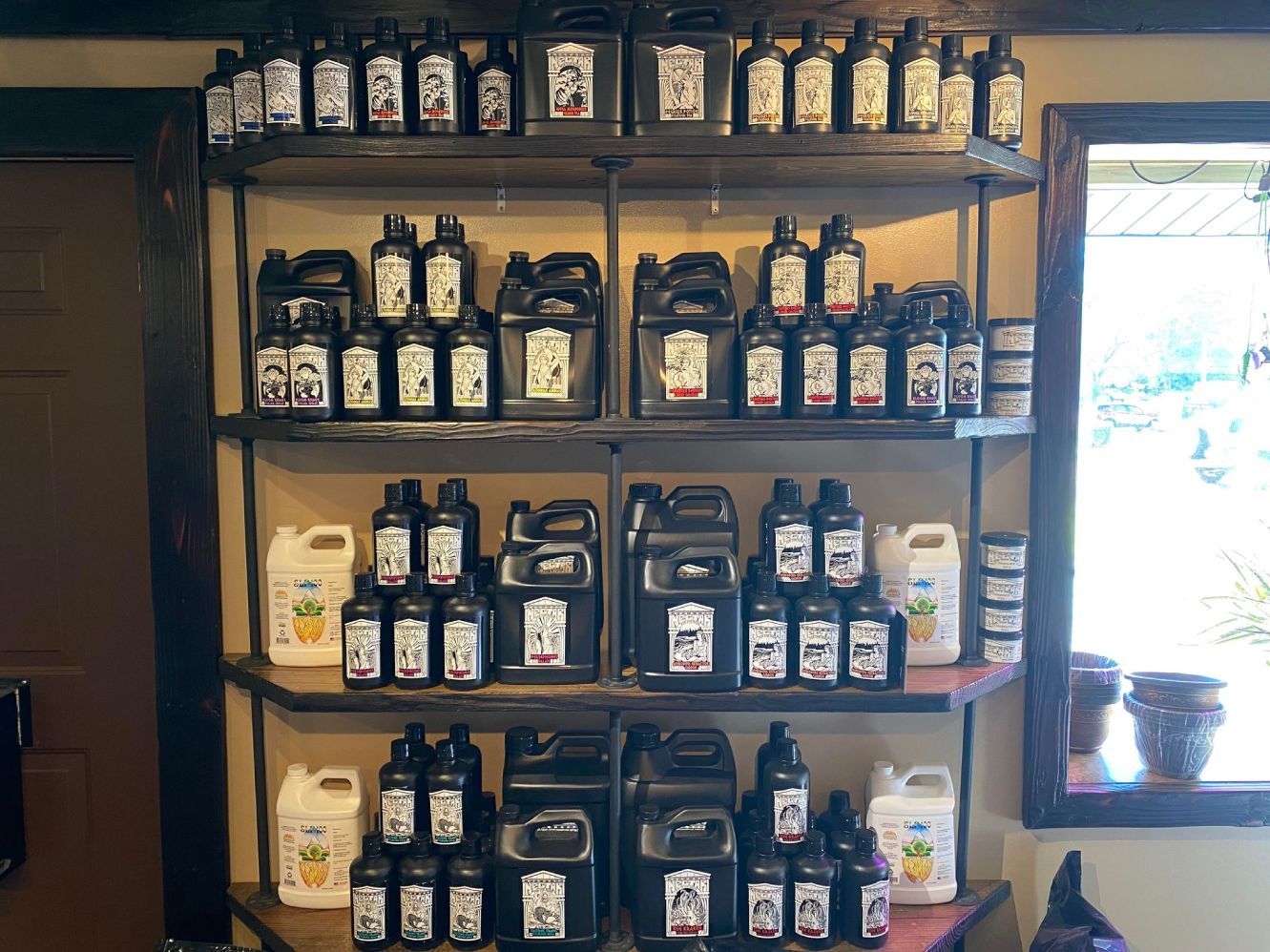Opening the Potential of Hydroponics: Comprehending Its Makes Use Of and Different Types
Hydroponics, an approach of cultivating plants without soil, has amassed enhancing interest for its possible to revolutionize agriculture and gardening techniques. The precision control over nutrient shipment, water usage, and environmental aspects supplies a glimpse into a future where food production can be enhanced in numerous setups. As we navigate with the detailed landscape of hydroponic systems and strategies, it becomes apparent that each technique holds unique benefits and constraints. By unwinding the diverse uses and types of hydroponics, we can discover a globe of opportunities that might improve how we picture lasting farming and horticulture techniques.
Benefits of Hydroponic Solutions

An additional benefit of hydroponic systems is the capacity to expand plants in a smaller sized room. By eliminating the need for soil, plants can be expanded up and down or in piled systems, making the most of the use of offered area. This is especially valuable in city locations or areas with restricted cultivable land. Moreover, hydroponic systems decrease the risk of soil-borne illness and insects, as there is no soil to harbor these dangers. This causes healthier plants and decreases the demand for harmful chemicals, making hydroponic farming a much more environmentally pleasant and sustainable option.
Common Uses in Farming

Given the reliable water preservation and space-saving advantages of hydroponic systems, it is apparent that these innovative farming techniques have actually discovered common usages in different markets of agriculture. The regulated setting of hydroponic systems enables year-round growing, giving a regular supply of fresh fruit and vegetables no matter of external climate problems.
Hydroponics is generally utilized for growing a variety of crops, consisting of leafy greens, tomatoes, cucumbers, peppers, herbs, and strawberries. Its flexibility encompasses vertical farming, urban agriculture, and greenhouse production. Furthermore, hydroponic systems are used in research study and educational settings to research plant cultivation, growth, and nourishment techniques. The versatility and efficiency of hydroponics make it an important tool in contemporary agriculture, addressing the challenges of sustainability, food safety and security, and resource optimization.
Checking Out Different Hydroponic Strategies
What are the numerous cutting-edge techniques made use of in hydroponics to boost plant cultivation performance and produce? Hydroponic systems use a range of methods that deal with various plant kinds and growing objectives. One preferred technique is the Deep Water Society (DWC) system, where plant origins are submerged in a nutrient solution, providing ample oxygen and nutrients. One more widely utilized approach is the Nutrient Film Method (NFT), which entails a shallow stream of nutrient remedy flowing over the plant origins, advertising water and nutrient uptake. In addition, the Ups and downs system, also known as the Flood and Drainpipe system, periodically floodings the plant roots with nutrient service, enabling for oxygenation during draining pipes periods. Aeroponics is an additional innovative method that entails misting plant origins with a nutrient service, making the most of oxygen absorption and nutrient uptake. Each of these strategies showcases the convenience and performance of hydroponic systems in boosting crop growth and yield.
Contrasting Different Hydroponic Systems
Checking out the efficiency and return improvement techniques in hydroponics leads us to compare different hydroponic systems readily available for a fantastic read plant farming. Each hydroponic system has its one-of-a-kind attributes, benefits, and limitations, making it vital for cultivators to select the most ideal system based on their specific demands and restraints.
Among the most usual hydroponic systems is the nutrient movie technique (NFT), where a slim film of nutrient remedy continuously moves over the plant origins. This system is prized for its water effectiveness and viability for growing leafy environment-friendlies and natural herbs. In contrast, the deep water society (DWC) system submerges plant origins straight right into the nutrient solution, supplying enough oxygen and nutrients. The DWC system is cost-effective and fairly easy, making it a popular selection for beginners.
An additional preferred hydroponic system is the ebb and flow (or flooding and drainpipe) system, which periodically floodings the plant origins with nutrient solution prior to draining it. By comprehending the distinctions in between these hydroponic systems, growers can make educated choices to maximize crop return and top quality.
Technologies in Hydroponic Technology
With advancements in hydroponic innovation, the agricultural sector is seeing a change towards extra lasting and efficient growing methods. Advancements in hydroponic technology are changing the way plants are expanded by taking full advantage of yields, preserving resources, and minimizing environmental effect. One vital development is the growth of smart hydroponic systems that make use of sensors and automation to keep track of and adjust ecological problems such as pH levels, nutrient concentrations, and light direct exposure in real-time. These systems enable accurate control over expanding problems, resulting in optimum plant growth and greater plant returns.
An additional notable development is the combination of upright farming methods with hydroponic systems, enabling the farming of plants in piled layers. This upright approach maximizes space utilization, making it optimal for metropolitan atmospheres where land accessibility is restricted - The Indoor Earthworm. Furthermore, making use of sophisticated LED lights systems customized to details plant needs has actually boosted power performance and improved growth rates in hydroponic setups
Advancements like these are driving the development of hydroponics, making it a highly eye-catching and lasting choice for modern farming.
Final Thought
To conclude, hydroponics offers numerous benefits in agriculture and has numerous methods and systems that can be utilized to optimize its possibility. Technologies in hydroponic modern technology remain to boost effectiveness and sustainability in food production. By comprehending the usages and various sorts of hydroponic systems, farmers and cultivators can unlock the full possibility of this innovative approach of growing plants without soil.
In addition, hydroponic systems find this allow for better control over nutrient degrees, pH balance, and ecological problems, leading to much healthier plants and higher returns.
